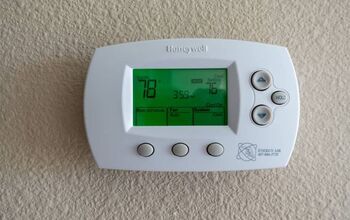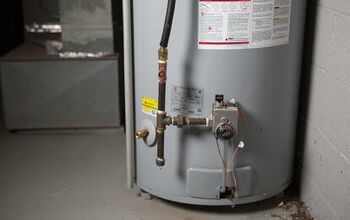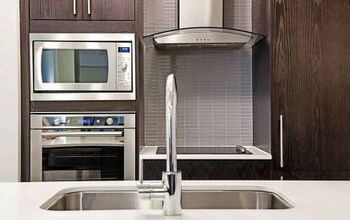How To Prevent Mold In A Sauna

Installing a home sauna is a big step, but many homeowners find it worth the time and money. However, it’s only worth the cost if you prioritize maintenance, or else you’ll experience problems, like mold. You’re not alone if you’ve ever wondered how to prevent mold in a sauna.
You can prevent mold in your home sauna if you dry the surfaces after each use and deep clean it monthly. You must also let your sauna air out for up to 30 minutes after each use to reduce the risk of mold forming. It’s worth installing a ceiling vent to prevent damp air from getting trapped and causing mold.
Don’t panic if you find mold and mildew in your sauna, as it’s easier to kill than it may look. You can even get rid of mold with vinegar and bleach in mild cases. Follow along as we explore how to prevent mold in a sauna.
How To Prevent Mold In Your Sauna
Your sauna is only safe from mold if you take steps to prevent it. Most of this comes down to moisture control, which you may struggle with at first. However, it’s important to do your homework and find out as much as you can about your specific sauna.
First, you must realize that each type of sauna varies in construction, design, and function. For example, traditional saunas are more prone to mold than infrared saunas, which aren’t as prone to getting mold. Preventing mold in a sauna is relatively easy if you follow a few simple steps, such as:
1. Wash Regularly
Many people don’t regularly clean their saunas, which leads to a mold problem. Mold can easily grow in a sauna, as the conditions for mold and mildew are perfect. You can’t prevent mold in a sauna unless you clean it at least once weekly.
Some people even clean their saunas after each use, which is the best way to prevent mold. For example, you can save yourself a lot of trouble if you wipe the sweat off the seat and ground in your sauna after each use. That way, you can reduce the moisture in your sauna to prevent mold and mildew growth.
It’s also important to clean your sauna with a sauna-specific cleaner, especially if you have a wood sauna. Otherwise, you can’t go wrong with a mixture of bleach and warm water, as bleach can kill mold. Clean your sauna casually each week and perform a monthly deep clean.
2. Use Minimal Water
It’s easy to go overboard and use too much water when you set up a home sauna. However, saunas typically only require 4 fluid ounces, or half a cup of water. You may introduce too much moisture if you pour more than 3-6 ounces of water over the rocks in your sauna.
How much water you must use typically varies based on the size and type of sauna you have. That’s why it’s a great idea to refer to the manual and follow the instructions when you set up your home sauna. The manual should also tell you how often you must pour more water over the stones.
Some people must pour more water over the stones every 15 minutes. Figuring out the perfect water level takes some trial and error, so you must pay attention to the condensation. Excessive water can even cool the stones too much, and your sauna won’t be as effective.
3. Encourage Breathability
Some people understandably varnish and seal their saunas, because they want to make them retain heat and look better. However, doing so can increase your chances of finding mold and mildew in your sauna. That’s because sealant and varnish can trap moisture and limit your sauna’s breathability.
This is a recipe for disaster, as moisture will quickly accumulate in your sauna under these circumstances. It’s much better to leave your home sauna as it is to ensure it can easily air out. Keep in mind, though, mold may still form on the walls, floor, and seats under the right circumstances.
However, removing mold from your sauna’s walls and floors is much easier than removing mold from under a sealant. You will quickly notice a musty odor if you trap moisture beneath a sealant in your home sauna.
4. Improve Airflow
Moist, stagnant air is a recipe for disaster, especially if you struggle with mold in your sauna. The combination of moisture, darkness, and stagnant air can quickly make mold grow. You can avoid this problem if you ventilate your sauna and improve the airflow.
Luckily, many saunas come with built-in vents, which can help prevent mold growth. However, it’s important to prioritize a sauna with a roof vent, as they’re more effective. Wall or side vents cannot remove the moist air as well as roof vents.
After all, heat rises, and moist air can crowd the top of a traditional or infrared sauna. Never close your sauna right after using it, or else you will trap warm, moist air inside. Leave the door open for at least 15 to 30 minutes after each use to ventilate your sauna.
5. Install A Drain
An infrared sauna may not need a drain, but most steam saunas can benefit from floor drains. That’s because condensation will drip from the walls and ceiling to the floor. Sweat will also accumulate, and that, paired with steam, can contribute to mold.
The less water that builds up, the less likely you are to find mold in your sauna. You can expect to spend at least $150 to install a floor drain in an existing sauna. However, it can cost much more if the sauna has a concrete floor, as that can entail heavy construction.
A simple retrofit may cost as little as $300 or even less if you do it yourself. Labor is the biggest cost, and labor can cost up to $150 per hour, depending on who you hire. However, installing a drain may not be necessary if you have no problems with mold and mildew.
How To Get Rid Of Mold In A Sauna
Anyone can get rid of mold in their sauna, that is, if it’s a relatively mild case. You can kill mold with a spot treatment using vinegar and bleach. However, you must carefully dilute the bleach, so the solution is 1 part bleach to 10 parts water.
Spray the mold or soak a cloth in the solution and carefully scrub the mold until it dissipates. Keep in mind that mold spores can be released when you scrub mold. That’s why you must spray your sauna with a preventive mold treatment to ensure it doesn’t come back.
Commercial mold sprays, such as Concrobium Mold Control, can help kill and prevent mold in your sauna. Rapid Clean Remediation is another effective commercial mold killer. You shouldn’t have problems with mold if you air your sauna out and prioritize ventilation.
Summing It Up
The best way to prevent mold in a sauna is to pat it dry and clean it after each use. It’s important to perform a deep clean at least once per month and kill mold with bleach as you find it. You can also prevent mold if you only use as much water as needed and leave the sauna door open for 15-30 minutes after each use.
Related Guides:

Nick Durante is a professional writer with a primary focus on home improvement. When he is not writing about home improvement or taking on projects around the house, he likes to read and create art. He is always looking towards the newest trends in home improvement.
More by Nick Durante

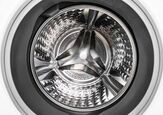













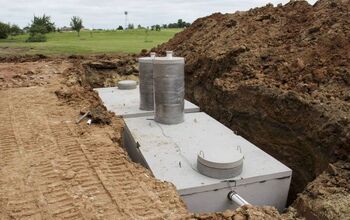


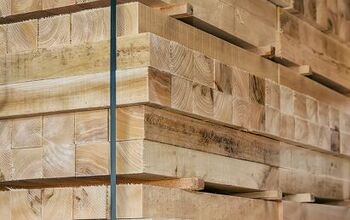


![Cost To Drill A Well [Pricing Per Foot & Cost By State]](https://cdn-fastly.upgradedhome.com/media/2023/07/31/9074980/cost-to-drill-a-well-pricing-per-foot-cost-by-state.jpg?size=350x220)
